- ブログ
・ 2025年5月9日
日本におけるSaaSの未来:2025年以降の展望

日本がデジタルトランスフォーメーション推進するなか、日本のSaaS(Software-as-a-Service)市場は2025年以降に目覚ましい成長を遂げると期待されています。
日本のSaaS市場は、様々な業界でのクラウドベース技術の導入拡大を背景に、上昇傾向にあります。日本は従来、新しい技術の導入に保守的でしたが、急速的なグローバル化、政府の積極的な取り組み、そしてパンデミックによるデジタルツールの導入加速を背景に、日本の企業文化は変化しつつあります。
しかし、より成熟した他国の市場と比較すると、日本企業のSaaS導入はまだ初期段階にあり、そのため日本はアジアで最も有望なSaaS市場の一つと見られています。今後も数多くの新たなビジネスチャンスが存在すると同時に、日本で事業を展開するSaaSプロバイダーは、日本特有の課題にも戦略的に対応する準備をしておくことが不可欠です。
日本においてSaaS市場の成長が見込まれる理由
日本のクラウドサービス市場は急速な拡大を続けており、2024年の収益は主にSaaSセグメントが牽引し、86億3000万ドルに達すると予測されています。スタティスタの統計によると、日本市場は、2024年から2029年にかけて19.31%の年平均成長率を実現し、2029年には208億6000万ドルに達する見込みです。金融、ヘルスケア、製造業などの企業が業務効率の向上、拡張、コスト削減のためにSaaS導入を牽引する一方で、市場の関心は、データプライバシーや規制遵守といった、SaaSに関連する重要なサイバーセキュリティ上の懸念へとますます移行しています。
ITおよびセキュリティ専門家を対象に調査を行ったベタークラウド社の2024年の報告書によると、企業はアプリの統合、業務効率、自動化によって推進されるSaaS管理の新時代に突入しています。
調査開始から初めて、一企業あたりの平均SaaSアプリ数が130から112へと減少し、前年比で14%の減少となりました。この変化は、企業が無駄なアプリの整理統合を進め、数よりも価値を優先する傾向に移行していることを浮き彫りにしています。重複するSaaSツールを排除した企業は、昨年の40%から53%に増加しました。アプリの無秩序な導入は抑制されたものの、半数以上(55%)の組織が依然としてSaaSアプリの管理を困難と感じており、特に2021年以降に33%増加したソフトウェアコストの上昇がその背景にあります。
これらの課題に対応するため、ITチームは自動化を活用しており、「オートメーションリーダー」と呼ばれる先進的な企業は、日常的なSaaS管理プロセスの最大70%を自動化しています。ITチームがオンボーディング、オフボーディング、権限管理、アプリ設定、APIの維持管理に取り組むなかで、この自動化は不可欠なプロセスとなっています。
2025年が近づくにつれ、事業運営におけるSaaSの役割は急速に進化しています。SaaSツールの無制限な導入は鈍化しましたが、焦点は、業務効率、より厳格な予算管理、IT主導のアプリガバナンスへと移っています。SaaSプロバイダーと企業は、この変化する状況下で成功を収めるため、柔軟性、拡張性、費用対効果の最大化を目指して、自動化と戦略的なSaaS最適化を行う必要があります。
AIは日本のSaaSをどのように変革するのか?
今後、日本がSaaSサイバーセキュリティと人工知能(AI)により重点を置くことが、2025年のSaaS市場を形作ることになるでしょう。より堅牢なサイバーセキュリティは世界中で差し迫った懸念事項となっており、日本も例外ではありません。日本のデジタル化への加速的なシフトは、デジタルインフラストラクチャの脆弱性を露呈し、堅牢なセキュリティ対策を緊急の優先事項としており、最近の注目度の高いデータ漏洩事件は、その重要性をさらに浮き彫りにしています。
クラウドベースのID・アクセス管理ソリューションは、企業によるセキュリティへの取り組みを再定義しており、主にゼロトラストアーキテクチャとアイデンティティファーストのセキュリティ戦略がこのトレンドを牽引しています。これらはもはや選択肢ではなく、必要不可欠なソリューションです。進化するサイバーリスクに効果的に対抗するためには、企業は高度な脅威インテリジェンスを獲得することが必要であり、それによりランサムウェア、サプライチェーンの脆弱性、その他のデジタル脅威を予測、特定、対応できるようになります。SaaSプロバイダーは、強固なデータ保護対策、安全なホスティング環境、透明性の高いコンプライアンス慣行だけでなく、セキュリティワークフローをシームレスに自動化し、積極的な防御戦略を強化する能力も実証する必要があるでしょう。これらの能力は、法的基準を満たし、日本企業との信頼を構築するために不可欠であり、成功に不可欠の要素です。
同時に、AIと自動化は日本のSaaSエコシステムを変革しています。AIを活用したSaaSツールは、基本機能をはるかに超える能力を提供し、実用的な洞察、予測分析、合理化されたワークフローへのアクセスを可能にします。日本が労働力不足と急速な高齢化に直面するなか、これはますます重要になるでしょう。AI駆動のSaaSプラットフォームは不可欠となり、カスタマーサポートの自動化やAIを活用した翻訳サービスといった分野でビジネスチャンスが生まれるでしょう。
主要な動向の一つは、東京証券取引所による2025年4月の改革であり、プライム市場上場企業に対し、主要な財務データと規制関連の最新情報を日本語・英語の双方で開示することを義務付けました。この変更は、透明性を向上させ、日本をグローバル基準に合わせ、そして海外投資家を誘致することを目的としています。これに対し、AIを活用した翻訳ソリューションを提供するストレイカー社は、「SwiftBridge」をリリースし、東証上場企業向けにカスタマイズされた、正確で迅速かつ拡張可能なバイリンガルソリューションを提供しています。これは、AIとSaaSソリューションが、バイリンガル対応のコンプライアンスとグローバルな事業展開に対する日本市場の高まる期待にいかにして応えているかを示す好例といえるでしょう。
日本におけるSaaSの未来は?
日本の高齢化と労働力不足は、デジタルトランスフォーメーションの重要な推進力となっています。若年層の労働力が減少するにつれて、企業は効率を改善し、事業を拡大するためにますますSaaSに目を向けています。政府によるデジタル競争力強化の推進も、この移行をさらに加速させています。また、日本のSaaS市場が進化するにつれて、日本におけるバーティカルSaaSへの顕著なシフトが現れています。SlackやSalesforceのような水平型プラットフォームとは異なり、バーティカルSaaSは小売、物流、農業などの特定業界のニーズに焦点を当てています。例えば、SaaSを活用した農業向けのデジタルツールは、日本の農業セクターの近代化を助け、労働力不足に対処しながら、生産性向上を実現させています。
日本市場で成功するためには、SaaS企業は単なる翻訳を超えたソリューションとサービスの提供を行う必要があります。SaaS製品を日本独自の規制要件、文化的ニュアンス、企業ワークフローに適合させるには、徹底的なローカライゼーションが最も重要な要素となります。例えば、電子署名の導入は、プラットフォームが日本の規制に準拠して初めて加速しました。成功するグローバルなSaaSプロバイダーは、日本企業に受け入れられるため、きめ細やかにローカライズされたユーザーインターフェース、充実したカスタマーサポート、そして会計や人事などで一般的に使用される国内システムとの統合に投資する必要があります。ローカライゼーションは、お互いの関係性を重視する日本市場において不可欠であり、戦略やサービスを適応させるために適切な時間をかけることが、長期的な成果を生み出すでしょう。
日本のSaaS市場で成功するために同じく重要な点は、パートナーシップの役割です。国内のテック企業や主要なクラウドプロバイダーとの協力は、SaaS企業に信頼性、広範な販売網、そして大企業顧客へのアクセスを提供するでしょう。さらに、統合をサポートし、オープンAPI環境を促進するSaaSエコシステムは、戦略的に有効な差別化要因となりつつあります。顧客がカスタマイズされたソリューションを作成できるようにすることで、長期的な導入とロイヤルティを実現することができます。
長い道のり
日本のSaaS業界は有望であるものの、課題にも直面しています。多くの組織では依然としてレガシーシステムが根強く残っており、統合や導入が遅々として進みません。さらに、日本の高齢化する労働力は新しいテクノロジーへの適応に苦労することが多く、変化への抵抗を生み出しています。これらのハードルを克服するため、SaaSプロバイダーはユーザーフレンドリーな設計を重視し、充実したトレーニングプログラムを提供、意思決定者に対して投資収益率(ROI)を明確に説明する必要があります。
とはいえ、変革は避けられない時期に突入しており、SaaSプロバイダーにとっては日本のデジタルシフトに商機を見出す絶好の機会が訪れています。しかしながら、日本でのビジネス成功に不可欠な要素である信頼と確固たる評判の確立を最優先事項に据えることが必須です。日本の消費者や企業は、購買決定を行う際、信頼性、評判、信用度を重視します。SaaSプロバイダーにとって、信頼を構築するということは、ローカライゼーションを優先し、ブランディング・マーケティング戦略を日本の文化や価値観に合致させることを意味します。
また、日本市場への参入は、B2Bブランドにとって特有の課題を提示します。複雑な規制、独自の商習慣などがそれに当たります。そのため、この市場で成功するためには、グローバルでありまた日本文化を深く理解するエージェンシーとの連携が極めて重要な戦略となります。リスクもありますが、長期的な成功の機会は計り知れません。そして、この成功達成には、適応性、柔軟性、そして日本における永続的な関係構築へのコミットメントが不可欠です。適切なアプローチとパートナーを獲得することで、日本で事業を展開するSaaSプロバイダーは、より効率的なデジタルの未来へと日本を導いていくうえで、影響力のある、強力なポジションを築くことができるでしょう。
よくあるご質問(FAQ)
デジタルトランスフォーメーションの推進、政府の積極的な取り組み、そしてクラウド技術の採用が主な要因です。
レガシーシステム、保守的な企業文化、そして複雑な規制などがあげられます。
ローカライゼーションは、SaaS製品が日本の独自の規制要件、文化的なニュアンス、そして商習慣へのシームレスな適合を実現します。
ローカライゼーションを優先し、高品質なカスタマーサポートを提供、さらに強固なデータ保護とコンプライアンス対策を実証することです。
AIを活用したツールは効率性、カスタマーサービス、各種分析のクオリティを向上させており、労働力不足と高齢化に直面する企業にとって不可欠なものとなっています。
カスタムメディアは、日本のSaaS業界に特化した月刊の『SaaS Source』を制作し、クライアントやパートナーが最新のトレンド、課題、ビジネスチャンスに関する最新情報に常時アクセスできるようサポートしています。私たちは、AI、クリーンエネルギー、フィンテック、ヘルスケア、製造業、テクノロジーなど持続可能な変革の最前線を牽引する産業が、ストーリーテリングの力を通じてオーディエンスと意義あるエンゲージメントを創出し、日本での成功実現を支援するという使命を担っています。カスタムメディアについてさらに詳しく知り、私たちと一緒に革新的なアプローチで、持続的かつ真に意義のあるインパクトを日本市場で生み出していきませんか?
シェアする
作者
カテゴリー
- AI / Technology / SaaS
- Manufacturing
- Professional Services
- Healthcare and Wellness





